Introduction
The impacts of climate change are among the greatest threats that humanity has experienced ever. It has been so much rampant that the concept of global warming has become a prime issue of interest in government and policy formulating bodies around the world and that is why its study and conceptualization is among the tenets that describe the future of modern world (Morrison, Slywotzky, Moser, Mundt and Quella 1999). Climate change can be defined as a long term statistical change of prevailing weather patterns in an area over a long time in some times ranging from as less as decades to as long as millions of years (Morrison, Slywotzky, Moser, Mundt and Quella 1999). These climatic changes and prevalence may be restricted to a regional area or in some instances may be felt globally. This paper chooses a local planning problem that has three integrated issues which are environmental, social and economic challenges and is taken from a real place situation which is the protection of Natural Coastal Environments. This paper will clearly explain these issues regarding the planning challenges, planning opportunities and proposed solutions and how the community around can be engaged in the development and implementation of the suggested solutions of the problem.
The three problem issues for the paper
Social Challenges of Climatic Change
The three areas of interest that this report discusses are the impacts of climate change on social, economic and environmental fronts which are the key areas that have created a lot of debate and discussion in the recent times. The issue is challenging when it comes to environmental protection arises when regarding the equity and inequality of the strategies and policies that are formulated and implemented by policy makers and governments. As the policies makers come with up with policies to mitigate the impact of climate change, it has been observed that the persons less responsible of climate degradation are the ones that suffer most. This was clearly seen by the reluctance of developed countries that are responsible for over 75% of the global toxic emissions to sign on the Kyoto Protocol leading the Copenhagen Agreement that in some way attempted to obligate them to do so (Wack 1985).
Economic Challenge of Climatic Change
The second challenging issue is the economic challenges that are associated with climate change. According to Wack (1985) it is possible to measure climatic change and its impact in economic sense and can be seen in market impacts where these impacts are linked directly to the market trends and transactions done that directly or indirectly affect a country’s GDP (Wack 1985). It is however generally acceptable that measures of non-market impact like climatic change impact on human health and challenges in the ecosystem are generally harder to evaluate and compute. In the same way, the following list indicates other areas that are difficult to evaluate with regard to climatic change especially in Australia:
- Knowledge Gaps – to obtain this, it is required to have details about demographics and geographical empirical data which usually results in errors and uncertainties in the available climatic models.
- Adaptation –Under or overestimation of this adaptive capacity is the undoing of the society which creates greater difficulty in assessment of the impact of climate change in an economic sense.
It has been surmised by Karl et al. (2009) that climate change is likely to increase inequalities in income within countries as well as among different countries. In addition, the author further observes that a small increase in the global mean temperature of as little as between 2 and 3 degrees centigrade is likely to cause negative impacts in the market sector and especially for the developing countries whose results may trickle to similar impacts to developed countries (Karl et al. 2009).
Environmental Challenge of Climatic Change
The third issue of interest is the impact of climate change in an environmental sense. Up to now, it is acceptable that the environment is the sole casualty of climatic change causing deleterious effects on the environment. The many causes of climatic change directly affect the environment by depleting it and causing destruction of some of the most important assets in the environment like the atmosphere, the ozone layer, the glaciers, the lakes among others. The effects of greenhouse gases directly released from the industries into the atmosphere have over time caused a lot of damage to the environment with catastrophic results. The figure below shows illustratively the effects of greenhouse emissions captured pictorially.
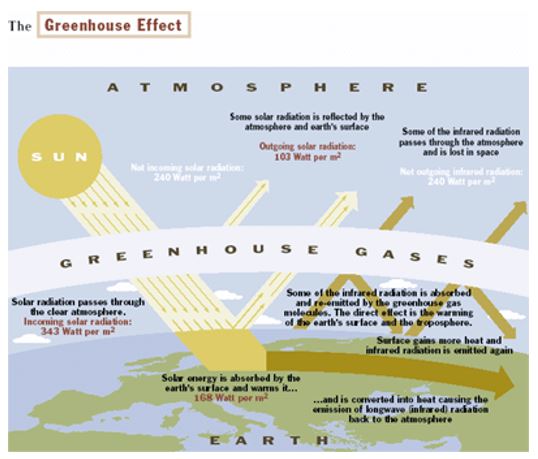
There are a host of sources that releases these gases into the atmosphere main of which is from the industries. When these gases are released without proper sanitation and cleaning done to detoxicate them, they carry with them their complex chemical structures into the atmosphere which are not biodegradable and which cause destruction to the environment. Figure 2 shows some of the sources of greenhouse emissions.
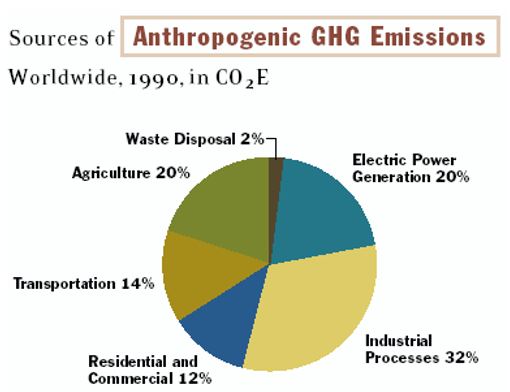
Protection of Natural Coastal Environment
Having discussed the areas of the paper that contains the issues to be addressed in the analysis, the local planning problem that has been taken for this paper can now be factored in. Australia is a country that enjoys relatively moderate climatic conditions throughout the year and the corollary of this has been the beautiful coastal regions and outlines that have emerged over time. It is a country that attributes most of its tourism boom to its coastal strip that is warm, rich of life and well designed and maintained. The recent developments of climate change through global warming and greenhouse emission has caused ripples along the coastal strip of Australia and that is why it is imperative to strategize and formulate viable policies that suggest ways of protecting the coastal environment. In preparing for this endeavour, there are things that are important to be noted and studied regarding the coastal environment and these are discussed below.
Coastal Processes
Figure 3 below shows the coastal process in the formation of waves and beaches. This process is important since the waves are the ones that provide the coastal strip with the beautiful smooth sand that is pushed to the strip from deep within the sea. When these waves continually blow on the shores, the carry with them many things from the ocean and depending on their severity, may cause destruction to the beach or lead to positive build up of coastal materials (Karl et al. 2009).
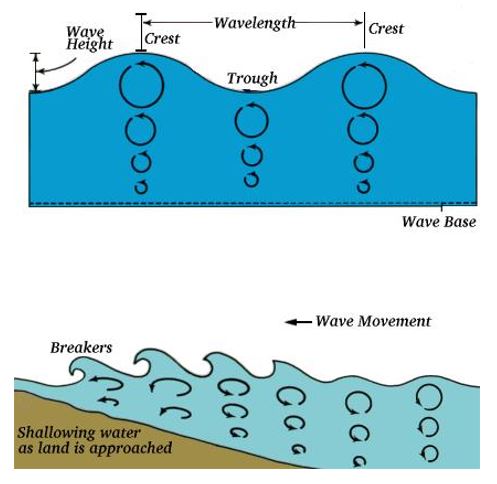
Soil Erosion at the Coast
The next process of interest when preparing for the protection of the coastal environment is the erosion that occurs there. This erosion is caused by the continued lashing of the waves against the coastal strip which carries with it soil along the beach (Tichy 1983). Usually sea cliffs are formed due to soil erosion at the coast where wave water erodes away the entire base of the face of the cliff which owing to the pressure dent caused by the removed soil slums down and also due to there not being support enough to sustain its height. Figure 4 shows the formation of the sea cliff.
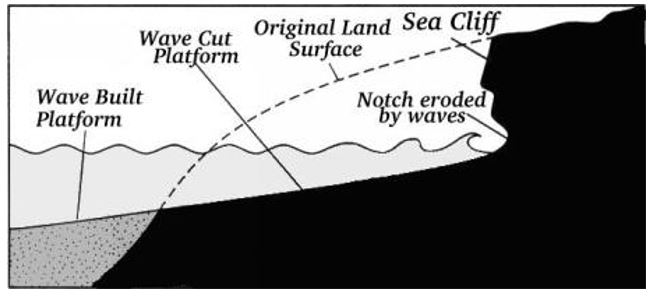
With the above assorted examples of the challenges of erosion on the coastal strip, there are a number of remedial approaches that can be taken in the bid to protect the strip against destruction through soil erosion which is hugely affected by climatic changes. These approaches are discussed below
Long shore Currents and Human Erosion Control
This is an approach that attempts to limit the destructive effects of erosion on the beaches where there are barriers that are erected along the beaches such that when the long shore currents carry with them sand along the beach, the sand is entrapped on these barriers and prevented from being moved farther away from the beach. Figure 5 shows such a setting of these barriers.

Figure 6 shows the process that are involved in the erosion process at the beach line and approaches that can be used to curb them.
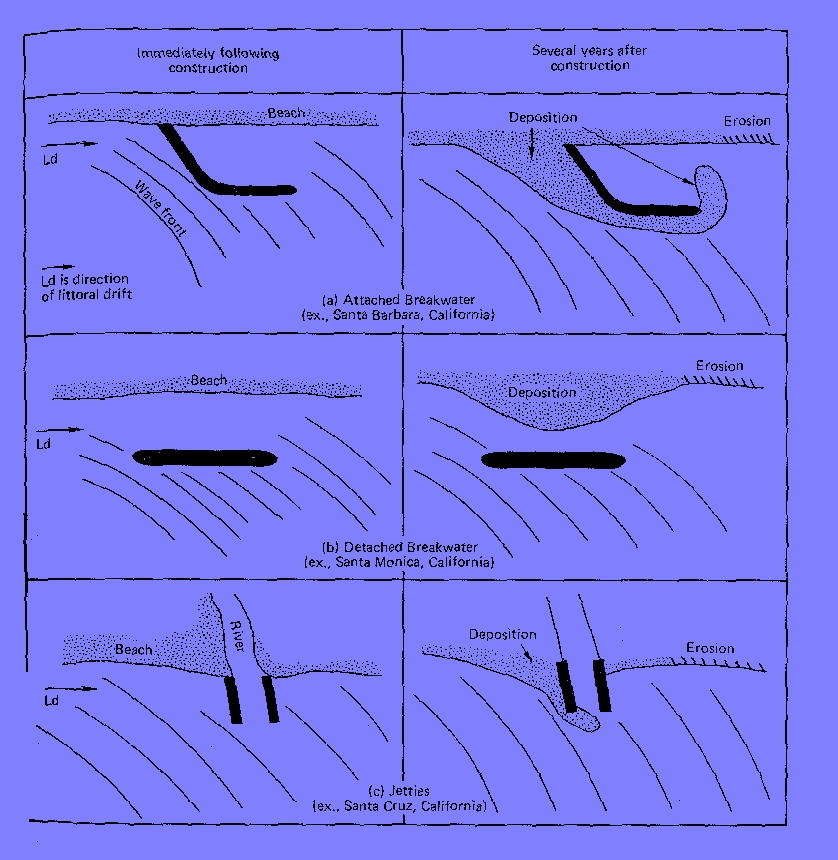
Having discussed the issues regarding protection of the coastal environment, it is now appropriate to discuss important aspects of the planning strategy of what is needed to sustainably maintain these remedial approaches as a specific response to climatic change. It is taken that these approaches are suggested by an organization that is concerned with protection of the environment which creates a conducive environment for proper discussion regarding planning and strategizing. Strategic planning is central to any operation as it clearly defines the objectives and assesses with great detail both the internal and the external situations of a company which is important for the company’s formulation of the strategy, implementation of the strategy as well as evaluation of the progress and adjustments made where necessary (Morrison, Slywotzky, Moser, Mundt and Quella 1999). The exact process of strategic planning includes explanation and re-assessing the missions and objectives of the company, strategy formulation, Environmental scanning, evaluation, strategy implementation, and control (Morrison, Slywotzky, Moser, Mundt and Quella 1999).
Analysis
Where preparing for an elaborate planning expedition like of this caliber, it is important to have models that direct through the process. Planning to create approaches that respond to climatic changes and challenges associated with them especially when protecting the Coastal environment is in no doubt imperative enough to require such models as SWOT analysis and PEST analysis. SWOT analysis is an acronym for strengths, weaknesses, opportunities and threats. These are internal and external environmental (Mintzberg 1987). Factors are imperative elements of the process of strategic planning. The internal factors for an organization planning for such a venture are strengths as well as weaknesses whereas external factors are opportunities and threats that are associated with the organization (Pascale 1990). This analysis model helps an organization to match its capacity and resources to the external competitive environment that it is working within (Christensen 1997).
Strengths
The strengths are its capabilities and available resources that can be used to complete with the resources that can be used to complete with the external environment. This in turn creates a competition with the external environment (Pascale 1990). This in turn creates a competitive advantage. For instance competitive advantage exists when an organization is able to deliver benefits that supersede those competitors thus creating differential advantage. Other strengths include (Christensen 1997):
- Response to the situation
- Resources
- Internal capacity
- Cost advantage
- Measure to the task
- Expertise in Environmental issues
- Operational efficiency
- Relevance to the problem
Questions asked at this stage are-:
- What are your strong assets?
- What are your unique resources?
- How do you maintain your unique resource?
- What structure do you have that are superior to your competitors?
- Is your competitive advantage sustainable?
Weaknesses
This are values from within the organization that destroy or lower the quality of delivery. Some of the weaknesses could be (Houghton, Ding, Griggs, et al. 2001):
Poor location
- Lack of Resources
- Unpreparedness
- Lack of skills similar products with stronger competitors
Here the questions to be asked are-:
- What areas do you need to improve on and why?
- What resources are you lacking?
- What edge do your competitors have over you?
- Do you have any new resources?
- Are you overly in debt?
Opportunities
These are external factors available to facilitate the improvement of quality and working of the organization. They include-:
- A new market niche
- An extended market niche for example by using the internet
- Entrance of a new investor
- Lack of competition
The questions asked here are -:
- What new friends might improve your organization?
- Are you in position to acquire new talents?
- Is competition failing to fulfill their clients?
- What change will present great opportunities?
Threats
These are external factors hindering the growth progress of the organization. They include:
- Bigger competitor in the domain
- Price wars
- Better products or service from competitors
For a successful SWOT analysis:
- Be realistic about the goals to be achieved
- Be very specific on what is expected
- Always apply SWOT in relation to your competitors
- Avoid over analyzing and keep it simple
- Be subjective
Questions asked here are-:
- Is staff moral boosted to avoid being poached by competitors?
- What if your customers are bankrupt?
- What if you can’t deliver products in time due to unavoidable reasons?
During SWOT analysis the following questions should be asked.
- What external forces will affect the strategies for instance similar products and new entrants?
- How could these external forces affect the changes in term of opportunity and threats?
- How does the organization address the threats?
- How does the organization seize the available opportunities?
- How can strengths within the organization be used on the available opportunities?
These summarized concepts of the model are particularly important for consideration when considering Australia. Australia is a developed country with efficiency being the back bone of all its industrial processes. This means that an organization that may want to engage in any activity has to show capacity and professionalism in what is able to do for it to win the confidence of the government. For this paper, it is suggested that a company or organization that may want to lead the operation of protecting the coastal environment has to show capacity and the above outlined insights of the model gives a hint of the general things that have to be considered in such a scenario. The initial stage of using a SWOT model by managers should be to select the right people for the tasks. Use the right people for tasks, use a successful process, be focused and detailed, and be in line with the business strategy (Slywotzky 1996).
Selection of the right people
The manager needs to select only key player who are in a position to participate fully and bring in rich knowledge and expertise into the team. This will in effect bring out a rich pool of ideas and in application get desired results (Slywotzky 1996).
A successful process
For the process to work communication is vital and is best workable when all the players are available and working face to face. All tasks must be carefully planned from the raw materials to achieving the results and follow a pre-determined time schedule (Slywotzky 1996).
The process should be accommodated to change in that if any addition needs to be made it is done so so that that greater improvement is achieved while at the same time it be focused and detailed (Schartz 1991). This brings in brainstorming session of the SWOT ideas expected to deliver rich ideas and this ideas need to be brainstormed on one more time and the productive ones absorbed and the rest rejected. The productive ideas brought out here should be clear and specific, easy to work on and tangible (Schartz 1991).
Conclusion
Having successfully discussed the issues pertinent to this paper and the planning challenges anticipated for the realization of the objectives as well as the planning opportunities and proposed solutions including the entire planning process, it is now appropriate to summarize the findings with a discussion of how the community can be engaged in the development and implementation of the suggested solutions. It has been established throughout this paper that environmental conservation is not a reserve of the few but rather a global concern that requires the full involvement of everyone. This is particularly important since climatic degradation effects are not localized to one specific region but rather permeate the entire world causing harm to both the culpable and the innocent (Tichy 1983). The specific area of interest of this paper has been the protection of the coastal environment that has been impacted negatively by climatic changes and the region of interest has been Australia. There is a huge importance and relevance of the coastal strip both to its adjacent environment as well as the offshore areas since is acts as a local ecosystem where the mixture of the salty water with the fresh water especially in the Australian estuaries provides good grounds and nutrients for marine life which is a source of income both directly through harvesting of fish and ocean animals and indirectly through tourism. Plant, animals and insect life is also protected by the salt marshes and beaches which in turn sustains the food chain for continued coexistence (Tichy 1983).
It has also been discussed herein that greenhouse gas emission forms the largest part of challenges facing conservation efforts of protecting the environment from destruction. It is now well acknowledged that environmental degradation in almost every sense can be attributed to global warming with is a result of greenhouse emissions. This does not spare the coastal environment as it is part and parcel of the environment. Of these greenhouse gases, carbon dioxide is the most prevalent one and one that readily causes most harm to the environment. The following figures show how centrally carbon dioxide is responsible of climate change and compares its release into the atmosphere from different quotas and their intensity (Tichy 1983).
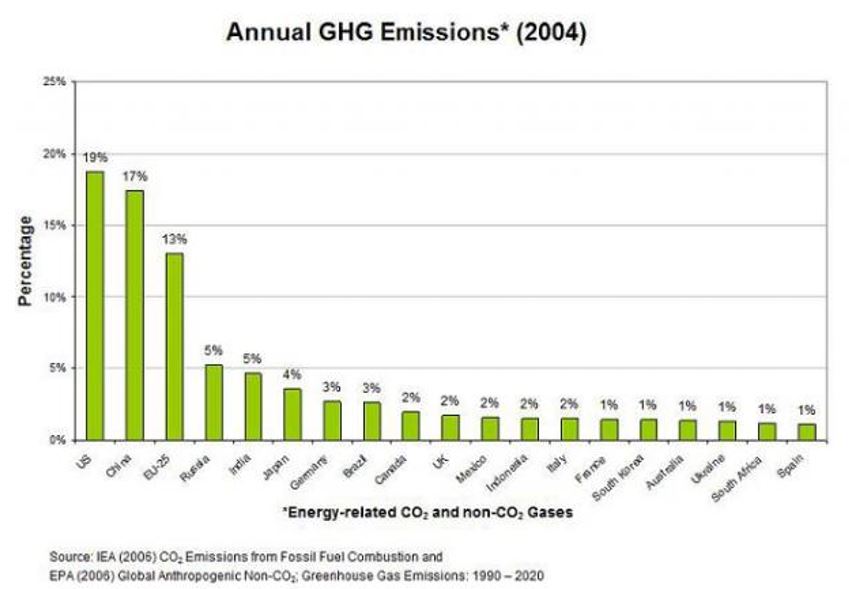
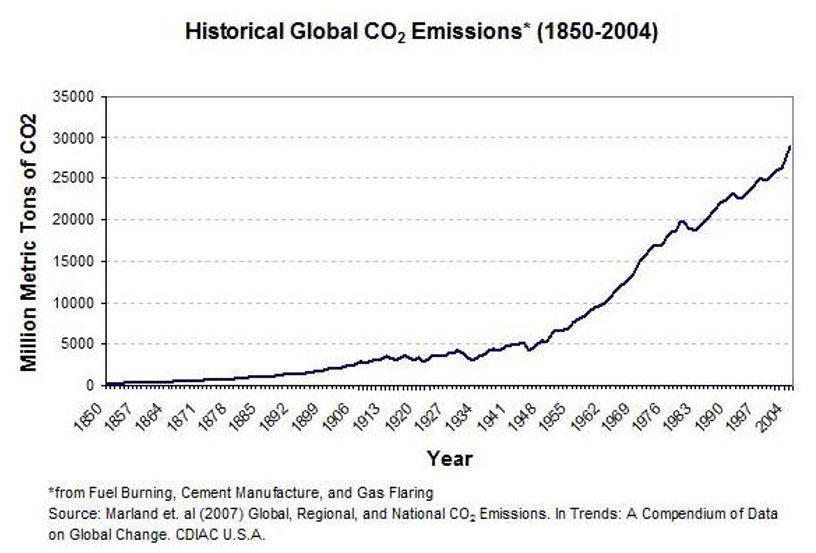
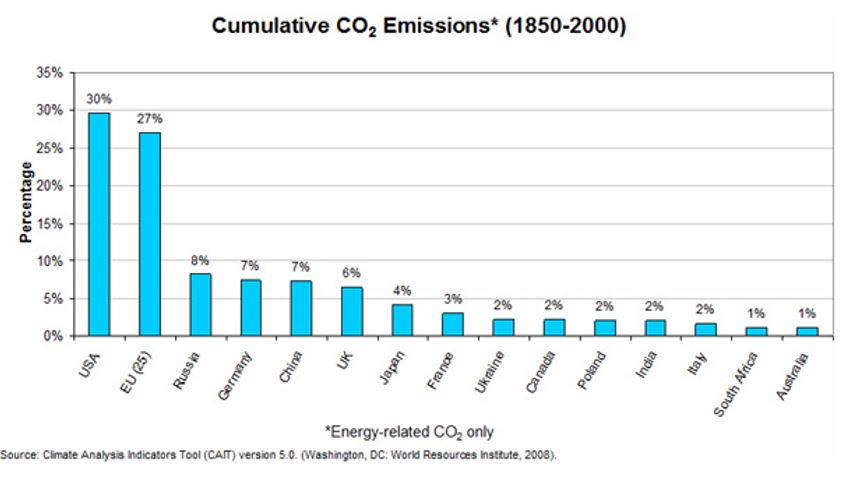
As the following figure shows, the coastal environment has become increasingly inhabited and developed by people over time to an extent that the coastal strip is slowly being occupied by people.
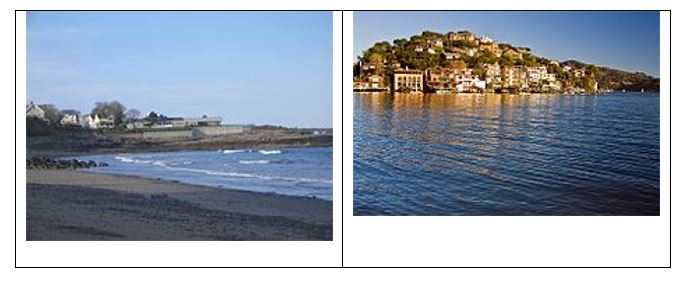
With these levels of rising development of the coastal environment through human habitation, it is important that residents of these areas are trained and taught about conservation of the environment around them. Pollution through residential toxins and poor disposal systems are some of the ways that can be used to protect the coastal environment. Regarding the erosion caused along the shores, residents and the society at large ought to be sensitized on the different ways that can be used to minimize it and ensure sustenance of the coastal region. These are some of the ways that can be used to ensure proper planning is in place and strategies formulated to sustain such development. As discussed earlier, it is suggested that such elaborate planning and strategizing can best be done by an organization that specializes in such activities rather than individual effort. In that regard therefore, world governments have to be compelled to support such organizations that are keen in protecting the environment more so the coastal environment. Australia is among the most response countries that are concerned with environmental conservation. Is among the few developed counties that readily supported the Kyoto Protocol and the Copenhagen Declaration regarding conservation of the environment by cutting down on its fuel emissions (Tichy 1983).
References
Christensen, C., 1997. The Innovator’s Dilemma. Boston: Harvard Business School Press.
Houghton, P.J., Ding, Y., Griggs, D.J. et al., 2001. Climate Change 2001: The Scientific Basis: Contribution of Working Group I to the Third Assessment Report of the Intergovernmental Panel on Climate Change. Cambridge, UK: Cambridge University Press.
Karl, T.R., et al., 2009. Global Climate Change Impacts in the United States. Cambridge: Cambridge University Press.
Mintzberg, H. 1987. Crafting Strategy. Harvard Business Review, 3(2), pp. 101 – 121.
Morrison, D., Slywotzky, A., Moser, T., Mundt, K. and Quella, J., 1999. Profit Patterns from PEST and SWOT Analysis. New York: Time Business (Random House).
Parry, M.L., et al., 2007. Climate Change 2007: Impacts, Adaptation and Vulnerability: Contribution of Working Group II to the Fourth Assessment Report of the Intergovernmental Panel on Climate Change. Cambridge: Cambridge University Press.
Pascale, R., 1990. Managing on the Edge. New York: Simon and Schuster.
Schartz, P., 1991. The Art of the Long View of SWOT analysis. New York: Doubleday.
Slywotzky, A., 1996. Value Migration. Boston: Harvard Business School Press.
Tichy, N., 1983. Managing Strategic Change: Technical, Political, and Cultural Dynamics. New York: John Wiley.
Wack, P., 1985. Scenarios: Uncharted Waters Ahead. Harvard Business Review, 5(1), pp. 43–73.